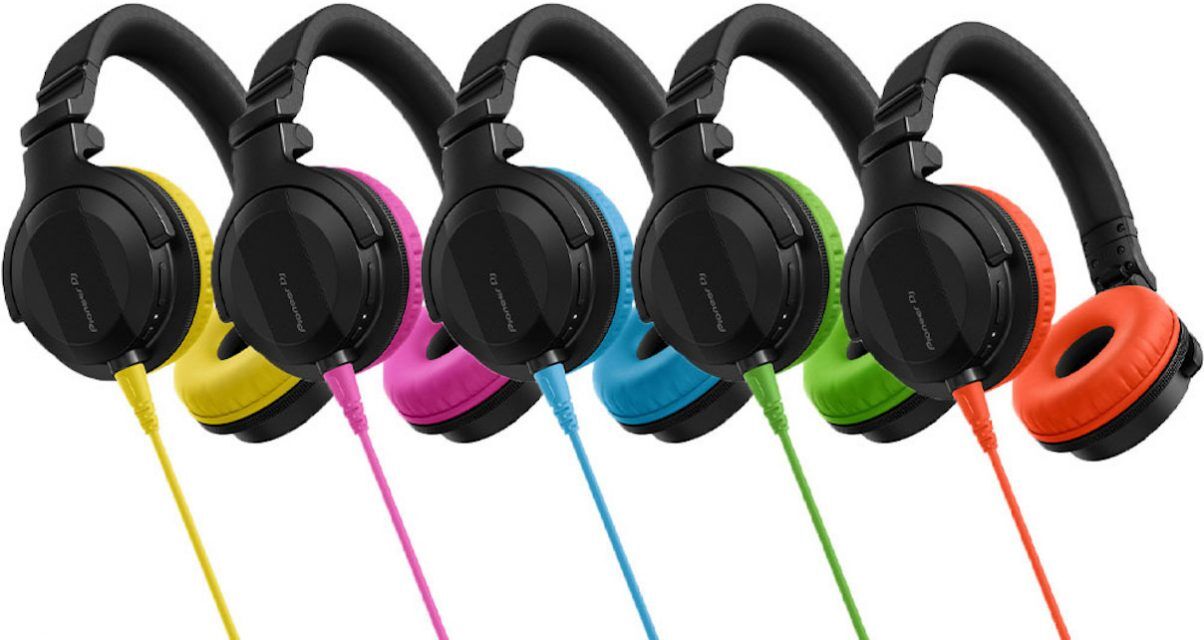The Lowdown
The Pioneer DJ HDJ-CUE1 is a good headphone for the money, ticking all the right boxes a DJ would want, yet coming in at easily the lowest price of any Pioneer DJ headphone to date. Just be ready to buy a 1/4″ to 1/8″ adaptor, and think about how you are going to transport them – there is no case provided.
Don’t have our latest DJ gear guide? Click here to grab your free copy
Video Review
First Impressions / Setting up
Pioneer DJ’s latest headphone, the HDJ-CUE1, is different because it is easily the most “budget” headphone the company has ever made, coming in at scarcely $60. Now this may seem a lot to most people when it comes to buying headphones, but in the realms of DJ headphones, it is pretty cheap.
Corners have been cut, but barring any doubts about durability (the Achilles heel of any DJ headphone), not in crucial places, as we shall see.
So the first thing to note is that these don’t come with a fancy bag or case, although they do fold up into their own headband to make it much easier to stuff them into a pocket or bag.
The second thing they’re lacking is a 1/4″ to 1/8″ adaptor. The cable has an 1/8″ headphone plug on the end (the type that you used to be able to plug into your phone, back when phones had headphone sockets – remember that?).
This is fine for nearly all DJ gear nowadays, but you may just come across a situation where you need to plug into a 1/4″ socket, and you’re going to look pretty stupid if you can’t, so worth investing in one – they cost a few dollars on Amazon.
They look pretty similar to any DJ headphone, but just a little bit smaller. They have a sturdy headband, with metal adjusters. There are two classic “horseshoe” ear cup holders in plastic that pivot 180 degrees forward and back (though not up and down, where there’s only about a 20 degree movement).
The ear cups themselves are closed-back, made from moulded plastic with faux-leather padding, containing the same drivers as the more expensive Pioneer DJ HDJ-X5 headphones. They are bigger than “on ear” (such as the Sennheiser HD25s), not as big as “over ear” (practically all other DJ headphones).
The cable is the usual coiled/straight hybrid that manufacturers seem to go for nowadays (a large straight section, with a small coiled section), and usefully is detachable, for ease of replacement or pimping up.
Pimping up? Yes, because with the addition of an accessory pack (the snappily titled HP-CP08-V, around $30 to buy), you can replace the black lead and ear cups with a colour or colours of your choice. I went for pink ear cups and a blue lead, to match Digital DJ Tips branding, and very distinctive they look too!
In Use
Once on your head and adjusted, they have the classic DJ headphone feel – pretty good audio isolation, thanks to the vice-like grip the headband exerts on your ears and head. These are not intended for long, languid listening sessions on the sofa…
Instead, the point is that you can isolate the loud club when you need to, at the expense of ultimate comfort (because no DJ wears his or her headphones for hours on end anyway).
Read this next: 5 Things To Look For In DJ Headphones
As they’re just a bit smaller than most, they sit nicely around your neck for when you’re DJing but not needing to monitor or cue anything in headphones, and they also perform well in the usual array of weird and wonderful DJ headphone positions (one ear on, one ear off, headband across forehead “Pete Tong” style, and so on).
As I mentioned above, they don’t have the vertical 180 degree tilt that some do, so if you’d miss being able to flip an ear cup around 180 degrees, they won’t be for you – for me that’s fine, as it’s something I never do.
Sound-wise, they are fine for a DJ headphone – loud, predominance of bass, well isolating (which is the other half of the audio battle in the DJ booth) – basically, all you need. They sound nowhere near as good as my current listening headphones of choice (Nuraloops, since you asked), but neither are they – or most DJ headphones – meant to. These are for cueing, mixing and general listening, not pure hi-fi enjoyment.
That said, they sound just as good as consumer headphones and earbuds (looking at you, Powerbeat Pros), and for many they will sound just fine for day-to-day use.
The model reviewed here is not Bluetooth, but there is a Bluetooth variant due imminently.
Conclusion
These are a good headphone for the money. They’re not as big as the more pro headphones that they ape – the ear cups are moulded a bit smaller, the headband is a little less padded – but for some, that will be seen as an advantage.
They certainly fold away small enough into their own headband for easy transporting, and although I have no way of telling you how durable they will be in the longer run, they seem as well built as many more expensive ‘phones.
The comfort is about right for a DJ headphone, the audio quality loud and bass-heavy, if a little unrefined, but nonetheless suitable for the job.
Learn to DJ with Digital DJ Tips: The Complete DJ Course
If you’re a user of Pioneer DJ gear at the lower end and don’t want to spend as much as you spent on your controller just to have some Pioneer DJ-branded headphones, they’re a no brainer, but frankly, they’ll work out fine for anyone looking for cheaper DJ headphones.
Plus, the “pimping up” is some fun icing on the cake that I suspect more people will go for than one might imagine.
All in all, a good addition to the range, and it’s nice to see Pioneer DJ spending some time thinking about casual hobby DJs by producing kit they can afford, or that they can justify buying.


